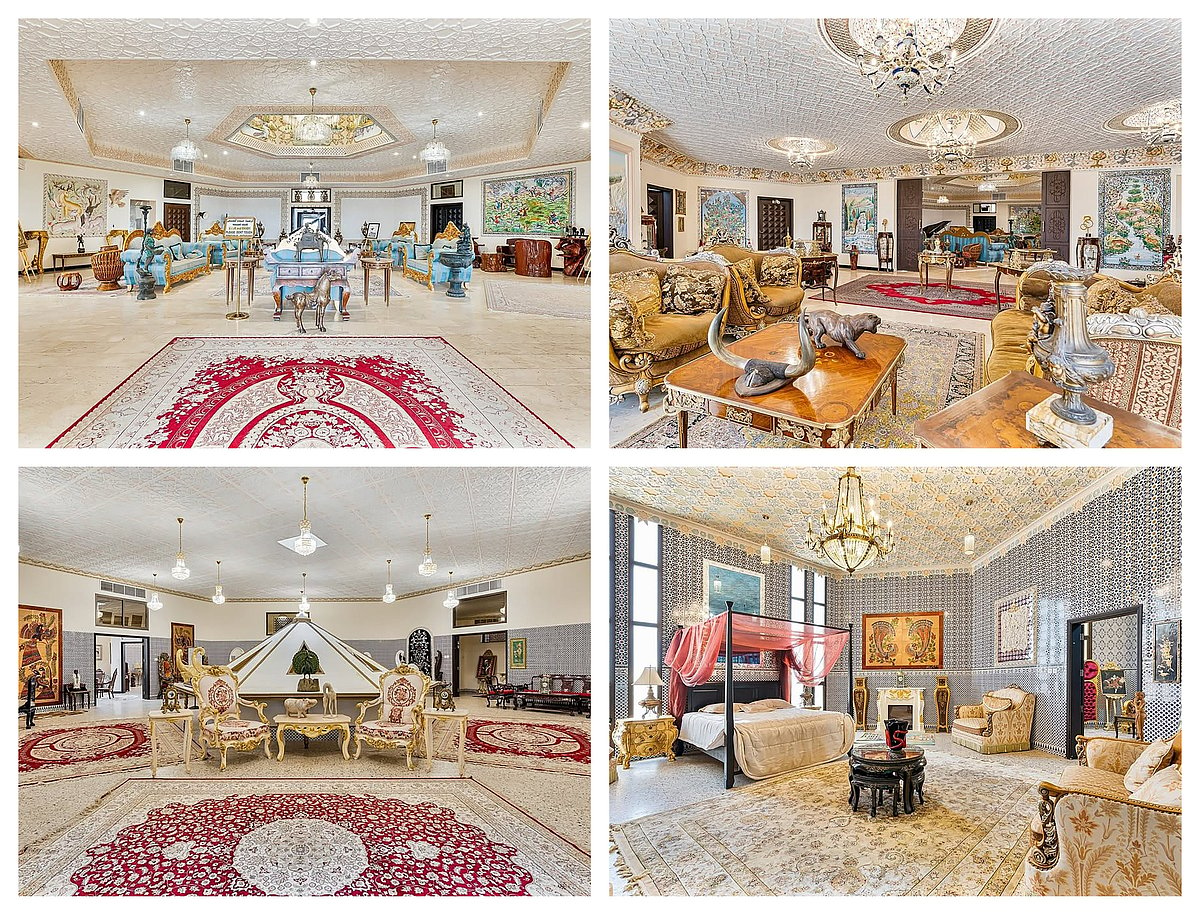Ras Al Khaimah’s ‘Haunted Palace’ gets a new life — and a new name
The myth fades, the art lives — Al Qasimi Palace returns to its true glory

Ras Al Khaimah: For decades, Al Qasimi Palace — known locally as the “Haunted Palace” — stood as one of Ras Al Khaimah’s most mysterious landmarks. Its grand marble façade and deserted halls fuelled tales of jinn and ghostly presences. Red markings on the walls, shattered chandeliers and long shadows became part of a legend whispered across the emirate.
But a recent visit by Gulf News reveals a different truth. Behind the myths lies not a haunted ruin but a forgotten masterpiece — an extraordinary work of art and architecture reborn after years of neglect.
A royal dream unfulfilled
The palace was the vision of the late Sheikh Abdulaziz bin Humaid Al Qasimi, a member of Ras Al Khaimah’s ruling family and a patron of the arts. Construction began in 1980 and was completed in 1991 at an estimated cost of over Dh500 million.
Sheikh Abdulaziz envisioned a home that fused international craftsmanship with Emirati elegance. Artisans from Morocco, Persia, India and China worked for more than a decade to bring his dream to life — each carving, tile and fresco a tribute to global artistry.
From the outside, the palace rises in immaculate splendour. The four-storey, 35-room residence crowns a 200,000-square-foot hilltop plot, clad in radiant Thassos marble — the same luminous stone used around the Kaaba in Mecca, famed for its purity and coolness beneath the desert sun.
Manicured gardens and fountains surround the palace. A paved driveway leads to tiered steps carpeted in bright green turf, bordered by hedges and flower pots. At the base stands a bronze statue of a Saluki, poised beside a shrub as if guarding the entrance. Nearby, portraits of the late Sheikh Zayed adorn the garden — symbols of respect and memory.
Inside the palace
Through the towering glass doors, visitors enter long, echoing corridors lined with mirrors, marble columns and antique lamps. The halls are dotted with lifelike taxidermy — falcons, owls and gazelles — reflecting Sheikh Abdulaziz’s love for art and nature. Mounted horns and antlers between rooms lend a regal, hunting aesthetic.
Yet despite its grandeur, the palace was never inhabited. Family objections to the lifelike sculptures and figurative art — believed to attract jinn — left it empty. Over time, stories of haunted rooms and ghostly figures took root, turning rumour into legend.
The birth of a legend
As the years passed, trespassers vandalised the property, leaving graffiti and red markings. Locals mistook these for signs of supernatural activity, fuelling tales of spirits and strange lights. What was once a design marvel became known as a haunted house.
From silence to revival
That legend has now been replaced with a story of restoration and revival. Businessman and art collector Tareq Ahmad Al Sharhan purchased the palace in 2019, seeing not ghosts but potential. He acquired it from the Sheikh’s heirs, restored it and reopened it to the public under a new name — Al Qasr Al Ghamedh, meaning “The Palace of Ambiguity.”
“The goal was always to share its story — its history, art and mystery,” Al Sharhan told Gulf News. “People are drawn to the legend, but the palace’s real beauty lies in its craftsmanship and heritage.”
Over a year, international teams of restorers repaired murals, polished chandeliers, revived Moroccan tiles and restored antique furniture. Defaced sculptures were reconstructed, and the gardens brought back to life.
“When I first stepped inside, people were afraid of the myths,” Al Sharhan said. “But I saw only a masterpiece waiting to breathe again.”
A legacy restored
Today, fountains flow once more, and every room gleams with light and artistry — a testament to patience, vision and cultural preservation. The palace now welcomes visitors not with fear but with awe. Its only haunting lies in the beauty of its silence — the shimmer of chandeliers, the scent of marble and polish, and the feeling of walking through a living museum.
Al Qasimi Palace stands today as a triumph of imagination and craftsmanship. Once shrouded in myth, it now celebrates the legacy of art and ambition that defined its creation.
Currently, the palace is on the market for Dh25 million. Speaking exclusively to Gulf News, Al Sharhan confirmed that it is for sale under one condition: the buyer must be Emirati.
“According to Ras Al Khaimah’s property regulations, the palace can only be registered under an Emirati name,” he explained. “My purpose for the sale is purely investment. The palace holds great cultural and historical value, and it deserves an owner who truly appreciates both.”
Sign up for the Daily Briefing
Get the latest news and updates straight to your inbox
Network Links
GN StoreDownload our app
© Al Nisr Publishing LLC 2025. All rights reserved.
